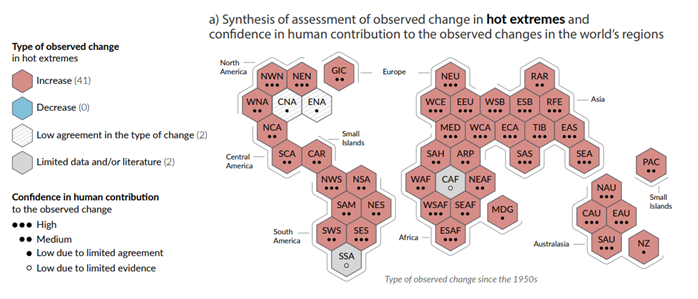Climate change – preparing critical assets for the inevitable
A buzz word that has been used to describe the past 18 months is “unprecedented” – an apt description even without considering the global pandemic. Bushfires, floods and storms of increasing ferocity have been a feature in Australia. There are obvious and legitimate concerns these will become more frequent and more destructive in line with climate change impacts.
It is therefore timely that the Intergovernmental Panel on Climate Change (IPCC) released the first of three volumes that comprise its Sixth Assessment Report (AR6)[1]. This first volume provides an overview of the current understanding and state of the climate, possible climate futures and what’s required to limit the impacts.
Some of the findings of this report are grim and it is a reminder that in the absence of major interventions, critical assets such as electricity networks are at significant risk of catastrophic – and expensive – damage.
Key takeaways
The report highlights that human influence has unequivocally warmed the atmosphere, ocean and land. This is evident with the significant increase in greenhouse gas concentrations in the atmosphere since about 1750 that started with the industrial revolution.
Adding to this, the scale of the recent events across our climate system have not been observed over many centuries to many thousands of years.
Extreme heat days and heatwaves are becoming more frequent and more intense across most regions, something that many of us in Australia have observed first-hand.
Observed changes in hot extremes in various regions across the worlds; Australia at the bottom right corner (IPCC, 2021)
The diagram above from the report[2], shows the observed changes in hot extremes in regions across the world. We can see that in Australia (bottom right corner), there is a clear increase in extreme heat occurrences and human-induced climate change is almost certainly the reason why.
Every additional 0.5°C of global warming causes clearly discernible increases in the intensity and frequency of extreme weather events, including heatwaves and heavy precipitation. A warmer climate will intensify both very wet and very dry weather which increases the likelihood of more flooding and drought events.
The report predicts that compound events, such as concurrent heatwaves and droughts, are likely to become more frequent with increased global warming. Weather events that have been unlikely in the past, will occur more frequently and with increased intensity, duration and/or over a larger area in the future.
The past eighteen months have been a live example of these findings, not just in Australia, but globally with the Texas winter freeze, the California drought and wildfires and recent disastrous fires in Greece. These events highlight the importance of resilience and preparing for the worst, especially for critical assets like our electricity network.
Resilient electricity network
The March 2021 floods in NSW and Queensland, the June 2021 storms in eastern Victoria and cyclone Seroja in Western Australia are some of the recent evidence of the impacts of climate change in Australia. During times like these, it is critical that customers have access to a secure and reliable supply of electricity.
Electricity networks are some of the first on the ground in dealing with the aftermath of extreme weather events to reconnect customers who have lost supply, as seen with the recent response from AusNet during the Victorian storms only a few months ago.
However, a key concern for networks is the cost of repair that arises during the rebuilding phase after an extreme weather event. For example, the recent storms and flooding in Victoria have resulted in total losses of $209M[3] so far, with the recovery effort still underway in some regions[4]. These costs will continue to increase as severe weather becomes more frequent and more intense – and they will ultimately be borne by customers.
In the meantime, electricity networks are developing innovative solutions to improve resilience such as implementing stand-alone power systems, community batteries and pole-top batteries
Resilience is a critical consideration for ensuring that the risks of the impacts of climate change are adequately addressed. Networks need to make necessary investments into their infrastructure now, to avoid significant costs in the future from the inevitable impacts of our changing climate. It is critical our regulatory regime adapts to enable mitigation of these risks.
Regardless of what the future may bring, electricity networks are at the forefront of the issue by employing innovative solutions and keeping the lights on for all of us.
[1] https://www.ipcc.ch/report/ar6/wg1/
[2] IPCC, 2021: Summary for Policymakers. In: Climate Change 2021: The Physical Science Basis. Contribution of Working Group I to the Sixth Assessment Report of the Intergovernmental Panel on Climate Change, p13
[3] Catastrophe 214: Victorian Severe Storms & Flooding – Insurance Council of Australia
[4] State-wide storm response continues as rangers tackle extensive damages | Mirage News




